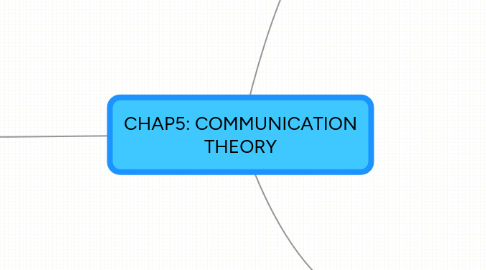
1. FUTURE COMMUNICATION MODELS
1.1. the end of traditional marcomms funnel model?
1.1.1. the old funnel
1.1.1.1. awareness, familiarity, consideration and purchasing
1.1.1.2. miss many touchpoints
1.1.1.2.1. check comments and back to consideration
1.1.2. marketers
1.1.2.1. where these influence points are
1.1.2.2. monitor discussions abt the brand
1.2. make way for the semantic web - new models required
1.2.1. semantic web: next development phase
1.2.2. give access to info, & set of rules to conduct automated reasoning
1.2.3. eg, lower volume when phoning
1.3. new marketing communications skills required
1.3.1. analytical pattern skills
1.3.1.1. measuring the flow of data
1.3.2. fast-moving, multiple project management sills
1.3.3. experimental curiosity and rigour
1.3.3.1. identify immediate opportunities and threats
1.3.4. system thinking
1.3.4.1. marketing: set of process = connecting all parts
1.3.5. mashable software fluency
1.3.5.1. understand mashable web with widgets, app
2. INTRODUCTION TO COMMUNICATION
2.1. is effective information exchange: no rejection, no misinterpretation, no misunderstanding
2.2. non-verbal and non-symbolic communications
2.2.1. space, time, kinetics (gestures and movement)
2.2.2. body language and facial gestures: powerful communication
2.3. symbolic and semiotic communication
2.3.1. symbol and signs are utilized in marketing
2.3.2. fabric softener use teddy bears/
2.4. source credibility
2.4.1. low 'source credibility' message: < effective high 'source credibility'
2.4.2. customer praise, published paper, speeches, awards won, membership, quality
2.5. opinion formers, onion leaders and connectors
2.5.1. opinion formers: paid to give opinions (journalists, consultants, lecturers)
2.5.2. opinion leaders: not paid (bloggers, fb fan page owner)
2.5.3. marketers should focus on satisfying these ppl, as they spread message
3. COMMUNICATION MODELS
3.1. a single-step communications model
3.1.1. active sender, passive receiver, comprehended activer
3.1.2. message is coded, sent through media channel, & decoded
3.2. a two-step linear communications model
3.2.1. sender, message, OL, OF, receiver
3.2.2. opinion formers: quoted in promotional literature,
3.2.3. style leaders: seen with brands
3.3. multi-tep linear communications models
3.3.1. multifaceted, multi-step, multi directional process
3.3.2. sender, message, channel, OF, OL, receiver
3.3.3. noise, channels, and feedback can be added
3.4. multi-step non-linear communications models
3.4.1. cust talk to each other, and back to the company
3.4.2. a web of communication, all built around the brand
3.5. classic and comtemporary communications models
3.5.1. adoption model
3.5.1.1. awareness, interest, evaluation, trial and adoption
3.5.2. the diffusion of innovations
3.5.2.1. innovators (OL), early adopters (OL), early majority, late majority, laggards
3.5.2.2. focus and find innovators and early adopters first, the next will be approached
3.5.3. accelerating diffusion - the tipping point
3.5.3.1. the law of few
3.5.3.1.1. adventurous influencers: powerful
3.5.3.1.2. need to identify and develop relationship
3.5.3.2. the stickiness factor
3.5.3.2.1. product, service, idea, message need infectious
3.5.3.3. the poweful of context
3.5.3.3.1. ideas spread quickly when they're relevant
3.5.4. crossing the diffusion chasms
3.5.4.1. each segments are different, need different solution
3.5.4.1.1. early adopters like exploring
3.5.4.1.2. early majority like zero risk
